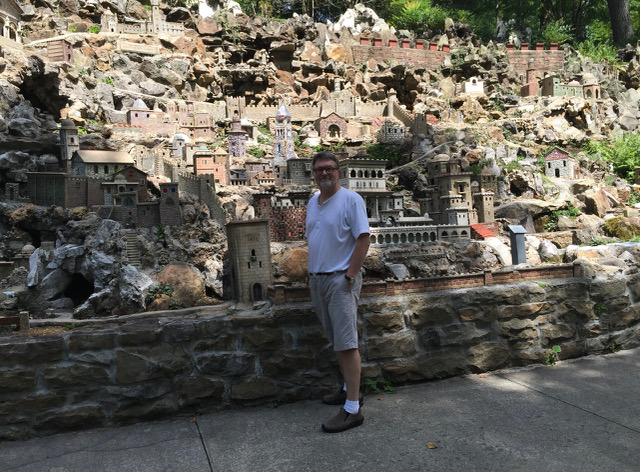For the last 35 years, John Foster has been an educator, graphic designer, painter, and photographer and continues as a passionate collector and scholar of photography, folk art, self-taught art, and art brut. Art & Antiques Magazine named the Foster collection of vernacular photography as one of the Top 100 Art Collections in the United States. He and his collection have been featured in magazines and newspapers ranging from The New York Times, Harper’s, Raw Vision, and more.
How did you get involved with SPACES?
If I remember correctly, it was Jo Farb Hernandez who first approached me about being on the Board of Trustees. And it has been a great honor to be entrusted with the life’s work of Seymour Rosen and seeing that the mission of the organization is carried forward. I have spent many years myself visiting and documenting sites. All of us on the board are people who in one way or another have contributed to this quiet but important field of art environments.
What are you most proud of that SPACES has achieved over the last 50 years?
I think, right off the bat, helping lead the charge to overhaul the existing brand of SPACES and the website. We realized early on that we needed a robust and creative website to bring the message of SPACES to a worldwide audience. There was a website that we inherited, but it was woefully inadequate. We decided as a team to invest in creating a website that fully encapsulates the overall accomplishments of SPACES as an organization and the variety and magnitude of environments from around the world. Jo Farb Hernández, Director and Curator Emerita of SPACES, was a fully invested leader. She’s just a warrior, and the hardest worker I’ve ever seen. Jo was truly the heart and soul of SPACES. Once we got the website designed with a new brand and logo, we were able to move forward with writing various descriptions of the sites. We were all given assignments to help describe various sites. It was an enormous job.
What do you hope to see SPACES do in the future?
The Kohler Foundation is doing an extraordinarily good job with SPACES. We are happy to see the organization in such good hands. Kohler’s involvement will mean that Seymour Rosen’s vision to bring awareness and understanding to art environments will live on.

John Foster being interviewed by local TV in Springfield, MO regarding the art environment of Ralph Lanning.
What sites have you been the most involved with?
Many years ago, there was an art environment in Springfield, Missouri, called the Garden of Eden which was created by a man named Ralph Lanning. Over the years, we became friends and I went to see him many times. I had been talking to him about ways to save his site, but unfortunately, he passed away before we could come to an agreement.
After he passed, I contacted Terri Yoho to see if we could bring his site under the auspices of Kohler as his land, all of his sculptures, his house, everything was to be sold at auction within a few weeks.
Thanks to Terri and the Kohler Foundation, we arranged for local Missouri State University to acquire the art. While we could not save the land and actual environment in situ, we were able to save the artwork. It wasn’t the ideal solution, but without Kohler stepping in, the work would have been sold off to various unknown individuals. As Terri said in her wise and thoughtful manner – sometimes things just aren’t meant to be. I am happy that we saved most of the art. It’s at the university now, and a good portion of it is on exhibit, and the rest is in storage.
What’s next for you?
I’m retired now. My wife of 38 years passed away last November, so I am learning a new way of life. I have an exhibition planned at the Cleveland Print Room next year and I just rented a studio where I am making art again.
What do you hope to see for the genre of art environments in general?
All of us at SPACES have been striving for better understanding and acceptance of art environments. This is one of the most misunderstood genres of art that exists today, yet most people love it when they discover a site in their state or on their travels. The people who make these environments, especially in the United States, are often shunned and looked at as oddballs by the neighbors within their community. In many instances, they end up having to fight narrow-minded community guidelines and city hall building codes. SPACES helps to bring understanding of these individuals by encouraging people on the local level to get involved with sites in their area. That is important, and the website offers ways to help them.

John Foster at the Ave Maria Grotto in Cullman, AL, which is located on the grounds of the St. Bernard Abbey. Built by Brother Joesph Zoetl, O.S.B. and opened to the public in 1934.



Post your comment
Comments
No one has commented on this page yet.